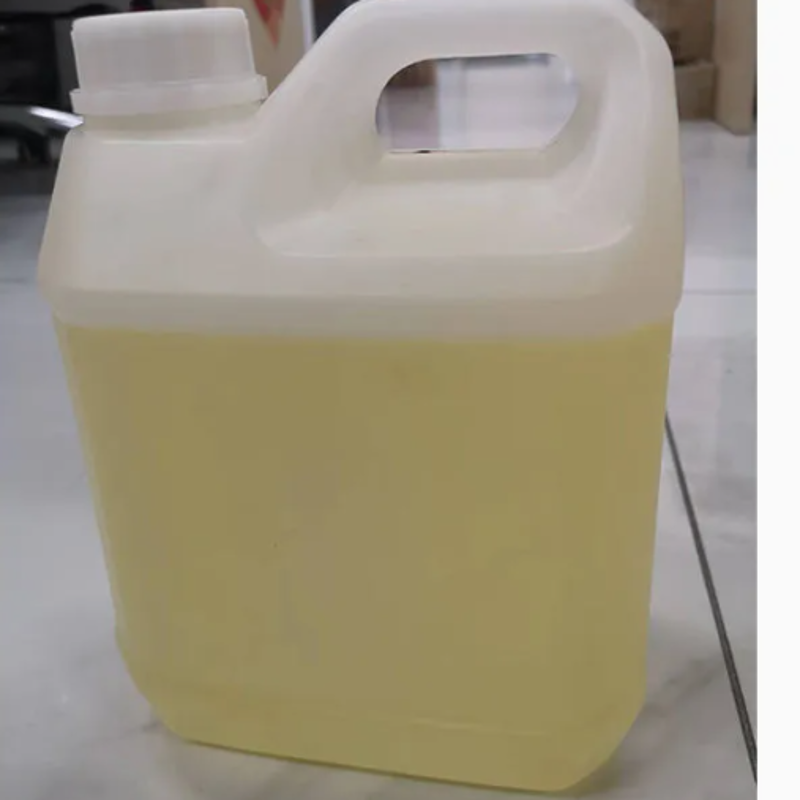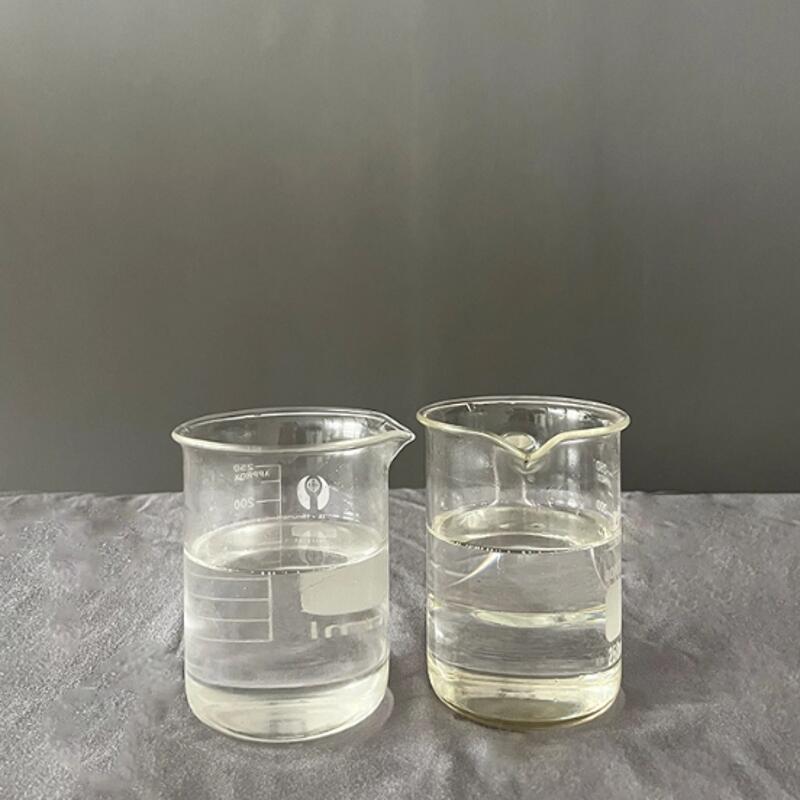-
Categories
-
Pharmaceutical Intermediates
-
Active Pharmaceutical Ingredients
-
Food Additives
- Industrial Coatings
- Agrochemicals
- Dyes and Pigments
- Surfactant
- Flavors and Fragrances
- Chemical Reagents
- Catalyst and Auxiliary
- Natural Products
- Inorganic Chemistry
-
Organic Chemistry
-
Biochemical Engineering
- Analytical Chemistry
-
Cosmetic Ingredient
- Water Treatment Chemical
-
Pharmaceutical Intermediates
Promotion
ECHEMI Mall
Wholesale
Weekly Price
Exhibition
News
-
Trade Service
Recently, Daxie Customs, a subsidiary of Ningbo Customs, seized a total of 1,055.
2 tons of solid waste named "polyvinyl chloride recycled chips"
.
The relevant person in charge of the customs said that this batch of recycled chips from Malaysia are polyvinyl chloride (PVC) recycled chips processed from waste plastics, which are used to produce products such as car floor mats
.
Import recycled plastic pellets? Solid waste?
Import recycled plastic pellets? Solid waste?Recycled granules are products produced by purposeful processing of waste plastics, with stable and reasonable market demand, and the content of harmful components is not higher than that in products produced from virgin materials
.
If the importer knows that the recycled pellets it imports are solid waste and still imports it before importing, it is a knowing crime, and it should be punished
.
Mixed grains, color difference, irregular shape, continuous grains, other ingredients may be mixed in, taste, heavy metals,
etc.
Why was the particle a general trade before, why is it now a solid waste? Our goods have not landed, what are the environmental problems?
Recycled granules are purposefully processed commodities, not solid waste, but how to distinguish recycled granules from solid waste can not only ensure the quality of recycled granules, allow producers, distributors, and users to easily identify them, but also facilitate supervision It is the most important task facing the industry at present
.
quick identification method
quick identification method(1) Radioactivity test method
Recommended method: Carry out the inspection according to the method specified in "Inspection Regulations for Radioactive Contamination of Imported Wastes that Can Be Used as Raw Materials" (SN/T 0570)
.
Index requirements: The penetrating radiation dose rate of external exposure should not exceed the normal natural radiation background value +0.
25 μGy/h at the location of the import port
.
(2) Detection method of abnormal smell
Recommended method: Sensory test
.
Indicator requirements: no strong irritating odor
.
(3) Inspection method for inclusion content
Inclusions refer to other substances mixed into imported recycled plastic particles during production, collection, packaging and transportation (excluding packaging and other substances that need to be used during transportation)
.
Recommended method on site: Observe the goods by visual inspection, if there are obvious inclusions (mainly including waste paper, waste wood chips, waste metal, waste glass, waste rubber/tire, thermosetting plastics, other plastics with metal coating, uncompressed The treated waste foamed plastic and plastic particles wrapped with foreign objects), the content of inclusions can be inspected according to the following methods when conditions are met on site, and sent to the laboratory for further identification when conditions are not met on site
.
Recommended laboratory method: Take out 2 groups of samples from the sample, each group is 100 g, accurate to 0.
1 g, and manually sort the above-mentioned inclusions mixed in the sample by visual inspection
.
Weigh the sample weight and the inclusion weight, respectively, to calculate the inclusion content
.
Index requirements: the inclusion content is less than 0.
5%
.
(4) Appearance property inspection method
Particles with different properties refer to recycled plastic particles that are inconsistent with the main color of the sample; recycled plastic particles that are not completely cut off during the production process or that two or more particles are bonded together; the length is greater than or equal to 4 times that of normal particles; thickness, width Or the diameter is greater than or equal to 2 times of normal particles; less than 1/4 of normal particles (or specified size); and recycled plastic particles with irregular shape
.
Recommended method on site: Observe the goods by visual inspection.
If there are obvious particles or powders with different properties, the appearance and properties can be inspected according to the following methods when conditions are met on site
.
Laboratory recommended method: Take out 2 groups of samples from the sample, each group is 100 g, accurate to 0.
1 g, sieve with a sample sieve of 833 μm, pick out particles of different characters from the sieve residue, weigh and calculate the difference.
Properties Total particle content and powder content
.
Index requirements: the total content of particles with different properties is not more than 5%, and the powder content is not more than 0.
5%
.
For fiber grade recycled polyester chips (PET), the powder content is not more than 0.
015%
.
(5) Identification method of polymer components
Recommended Method 1: Analysis by Infrared Spectroscopy
Identify according to the methods specified in "Portable Infrared Spectroscopy Method for Rapid Identification of Polymer Components in Recycled Plastic Granules" (see Annex 1) or "General Principles of Infrared Spectroscopic Analysis Methods" (GB/T 6040)
.
Recommended method 2: Raman spectroscopy analysis
Identify according to the methods specified in "Portable Raman Spectroscopy Method for Rapid Identification of Polymer Components in Recycled Plastic Particles" (see Annex II) or "Laser Raman Spectroscopy Method for Identification of Polymer Components in Recycled Plastic Particles" (see Annex III)
.
Note: Infrared spectroscopy and Raman spectroscopy reflect different aspects of substances and the spectral characteristics of different principles, which play a good complementary role in technology and increase the reliability of the conclusion
.
Indicator requirements: The types of polymer components are consistent with the declaration
.
(6) Determination method of harmful element content
On-site recommended method: carry out preliminary screening according to the method specified in the "Portable X-ray Fluorescence Spectrometry Method for Rapid Identification of Harmful Elements in Recycled Plastic Particles" (see Annex 4)
.
Laboratory recommended method: According to "Determination of Six Restricted Substances (Lead, Mercury, Cadmium, Hexavalent Chromium, Polybrominated Biphenyls and Polybrominated Diphenyl Ethers) in Electrical and Electronic Products" (GB/T 26125) "X-ray Fluorescence spectrometry (XRF) screening" method for detection
.
Indicator requirements: It should meet the limit requirements of "Limited Requirements for Restricted Substances in Electrical and Electronic Products" (GB/T 26572).
The limit of harmful elements of imported recycled plastic particles is shown in the table
.
The on-site preliminary screening result shall not be higher than 50% of the limit in the table, otherwise it shall be sent to the laboratory for further testing; the laboratory determination result shall not be higher than the limit in the table
.
(7) Consistency analysis method of polymer components
Recommended method: Test according to the method specified in "Differential Scanning Calorimetry (DSC) of Plastics (DSC) Part 1: General Principles" (GB/T 19466.
1), perform parallel tests on samples of the same character, and perform parallel tests on samples with different characters.
single test
.
Index requirements: The DSC curve is basically consistent
.
(8) Ash Determination Method
Recommended method 1: Detect the ash content of the sample according to the method specified in the Thermogravimetric Method of Plastic Polymers (TG) Part 1: General Principles (GB/T 33047.
1)
.
Recommended method 2: Test the ash content of the samples according to the method specified in "Determination of Ash Content of Plastics Part 1: General Methods" (GB/T 9345.
1)
.
Indicator requirements: There is no significant difference in ash results
.
At present, a new national standard for recycled plastics is being prepared.
There are more than 20 formal inspection items for each variety.
Any unqualified indicator will be judged as solid waste according to the current solid waste identification method.
Once the imported goods are judged For solid waste, the penalty is very serious, with a huge fine of more than 500,000 yuan but less than 5 million yuan, so enterprises should pay more attention when importing recycled plastic pellets!







